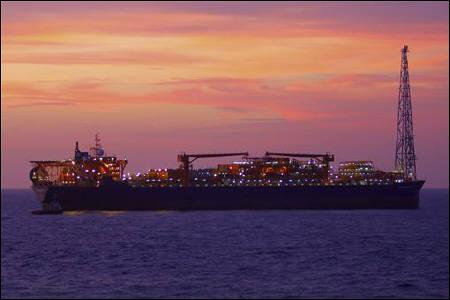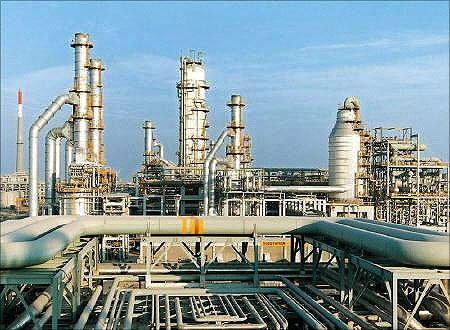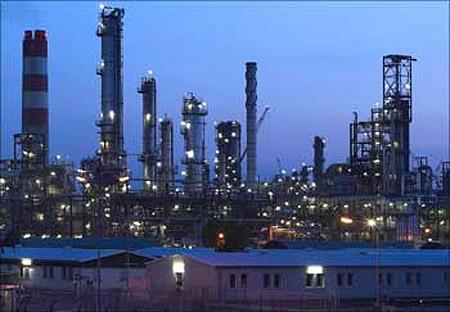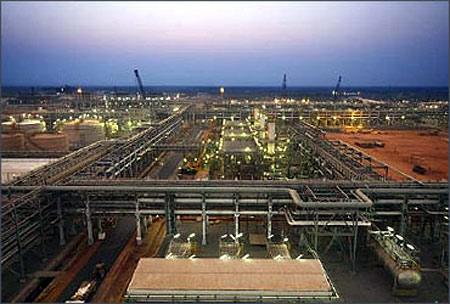 | « Back to article | Print this article |
RIL earnings hinge on gas price review
Investors in Reliance Industries can brace for more of sombre news.
Morgan Stanley, the global financial services company, says India's largest private sector company (by market value) might lose 11 per cent of its earnings per share in 2014-15 earnings estimates if gas prices remain at $4.2 a unit.
Morgan Stanley estimates that if gas prices go up to $8 a unit, RIL's earnings will go up by Rs 2,042 crore in FY15 or Rs 69 a share from its exploration and production operations, assuming gas production at 18 mscmd (million standard cubic metres a day).
However, if the rise does not come by April 1 next year, the EPS will go down by Rs 69 a share or 11 per cent.
Click NEXT to read further. . .
RIL earnings hinge on gas price review
An RIL spokesperson did not reply to an email sent to seek their comments. A source with an Indian government-owned investment institution said the gas price rise would be the most important trigger for the company's shares to fall or go up.
Background
The current gas price formula for the D6 block in the Krishna-Godavari basin, where RIL made the discovery and is the operator (the government sets the price of the gas sold and decides who will buy) is to end on March 31, 2014.
The power, finance and fertiliser ministries have opposed a proposal from a committee chaired by C Rangarajan (Head of the Prime Minister's Economic Advisory Council) which seeks to double the price of this gas.
Click NEXT to read further. . .
RIL earnings hinge on gas price review
Recently, top RIL officials, including Chairman Mukesh Ambani and Bob Dudley, chairman of its London-headquartered partner, BP, met Prime Minister Manmohan Singh on the issue.
They pressed the case for an increase in the gas prices. BP owns a 30 per cent stake in Reliance's gas fields.
RIL shares closed at Rs 792 on Monday on the BSE. This is a 40 per cent loss in value over five years, with production from KG-D6 having steadily declined since 2009.
In an informal post-March quarter results conference, Reliance said it would be investing $5 billion (Rs 27,000 crore) to upgrade the KG-D6 field.
It has also given a plan to the petroleum ministry to start developing another gas field in the Bay of Bengal, called NEC-25.
Click NEXT to read further. . .
RIL earnings hinge on gas price review
Rangarajan formula
The Rangarajan committee suggests domestic natural gas prices must be linked to world prices, to attract investments.
In its proposed formula, domestic gas prices will be calculated as the average of two others.
One is the average global producer price for Indian imports, that is, the volume-weighted average of 'netback prices' of Indian liquefied natural gas imports at the wellhead of the exporting countries.
This will exclude pipeline rates, liquefaction costs, shipping costs, import duties, etc, as these do not accrue due to production activity.
This would represent the average global price for Indian imports.
Click NEXT to read further. . .
RIL earnings hinge on gas price review
The second part of the formula will price in the average of major global markets.
Under this, there would be a volume-weighted average of natural gas prices in three major markets -- the US (Henry Hub price), UK (NBP or National Balancing Point price), and Japan (netback price at the supply source).
Based on this formula, analysts estimate that natural gas prices in India could nearly double, from $4.2 a unit to $8 a unit.
This will be bad news for power and fertiliser companies, and the government would also have to give more money as subsidies. Hence, the fertiliser, finance and power ministries have opposed the Rangarajan formula.





